Risk adjustment and coding leaders face mounting pressure to deliver accuracy, reduce audit risk, and streamline workflows within their organizations. Next-generation HCC coding software must solve these fundamental problems, not perpetuate them.
Machine learning-based suggestions with confidence intervals create more work, not less, even while they miss many HCCs or suggest codes with lower RAF scores than documentation warrants. Moreover, they often cannot adapt to the various risk adjustment coding tasks that payers undertake, like RADV audits and claims linking.
Here’s what VP-level buyers should demand from any medical coding solution they’re evaluating.
The Disadvantages of Machine Learning HCC Coding Tools
Common HCC coding tools on the market today rely on machine learning approaches that hit accuracy ceilings around 70%. These systems produce suggestions with confidence scores, forcing coders to review every recommendation manually. The result? Coders spend more time validating questionable suggestions than they would coding from scratch.
Risk adjustment coding companies using machine learning approaches typically require extensive training periods, ongoing model tuning, and constant human oversight, with reduced audit transparency due to their inherent black-box nature. These systems get marginally better over periods of time, but accuracy improvements plateau quickly and time and money are lost in the training process.
What Next-Gen Software Must Deliver
Precise Code Matching, Not Probability Guessing
The most advanced risk adjustment coding solutions employ Precise Word Matching AI that works entirely differently from machine learning. Precise Word Matching AI uses millions of queries, i.e., collections of words, so that when these words match, the exactly correct, most specific ICD-10 is identified. Instead of statistical model, Precise Word Matching AI is a deterministic natural language processing (NLP) and context logic rather than probabilistic pattern recognition. Each of the queries used by Precise Word Matching AI is curated by an expert coder. As a result, it ensures that only documented evidence consistent with coding guidelines is surfaced, increasing transparency. Because every code suggestion is directly traceable to explicit chart language, accuracy and auditability are inherently higher, with Recall rates typically 98% or higher. More importantly, it eliminates confidence intervals entirely. Coders receive clear, actionable recommendations without the burden of probability assessment.
Critical Evaluation Criteria for VP-Level Buyers
Audit Risk Mitigation Capabilities
Next-generation platforms must provide bulletproof audit trails that map every code assignment to specific clinical documentation. Look for systems that automatically flag potential compliance issues before claims submission.
The most advanced solutions maintain detailed logs showing exactly how each diagnosis code was identified, validated, and assigned. This transparency becomes invaluable during CMS audits or internal compliance reviews. Machine learning AI is plagued with the ‘black box’ issue as it lacks the ability to be transparent. In contrast, Precise Word Matching (PWM) AI by nature matches the risk-adjusting ICD-10 code with the documentation in the medical record, thereby remaining fully transparent, thus improving compliance and decreasing RADV risks.
Cost Savings Through Automation, Efficiency and Accuracy
Calculate total cost of ownership carefully. Legacy systems with low automation rates require substantial coder time investment, creating hidden costs that eclipse software licensing fees.
Machine learning platforms have a lower accuracy rate, typically ranges between 70% depending on data quality and disease prevalence, with a decreased accuracy and HCC capture among rare or uncommon codes. Model accuracy can drift when applied to new documentation styles. This makes it difficult for auditors or clinicians to verify why a condition was suggested or to ensure compliance with CMS guidelines.
Precise Word Matching AI’s high accuracy rate and rating of documented ICDs by their strength of MEAT support typically increases coding speed by 2x to 4x, thus delivering a high ROI with lower labor costs.
Implementation and Change Management Requirements
Training and Adoption Timelines
Next-gen platforms with intuitive interfaces typically require minimal training investment. Look for solutions where coders become productive within days, not weeks.
Machine-learning systems often require months of training and ongoing support. This extended learning curve delays ROI and frustrates users who expected immediate productivity improvements.
For Precise Word Matching AI systems, the change management is much faster.
For machine learning platforms, they require weeks or months of training with the new codes released by CMS each year, thus causing coding delays and coder confusion.
Since Precise Word Matching AI involves no statistical modeling, it can code CMS’s new ICD-10 codes on the day they take effect. As a result, these annual code changes have no impact of coders’ productivity.
Vendor Support and Ongoing Optimization
Evaluate vendor responsiveness and technical support capabilities carefully. Risk adjustment coding requirements evolve constantly. Choose vendors with demonstrated track records of rapid compliance updates and proactive customer communication about regulatory changes.
Customer service quality and responsiveness are key. Choose a company that is known for real-time and elevated customer service, where the client is not just a number.
Accuracy and Denial Rate Improvements
Baseline your current coding accuracy before implementation. Next-generation platforms using Precise Word Matching AI should deliver measurable improvements within 30 days of go-live.
Coder Productivity Metrics
Measure charts coded per hour before and after implementation. Advanced systems should double or triple coder productivity while improving accuracy simultaneously.
Track coder satisfaction scores as well. Systems that improve productivity without increasing stress typically see higher user adoption and better long-term outcomes.
The Bottom Line for Healthcare Leaders
HCC coding software selection determines whether your organization thrives or struggles with risk adjustment requirements. Machine learning approaches have reached their accuracy limits and offer decreased transparency and revenue due to training requirements and model drift. Confidence intervals and manual review workflows waste valuable coder time.
Cavo Health’s next-generation Cavo Coder usies Precise Word Matching AI to deliver the accuracy, speed, and financial performance that VP-level buyers demand by increasing productivity, raising RAF scores through higher HCC completeness, and offering real-time quality customer service that is proven.
In short, Cavo Coder eliminates the fundamental problems plaguing legacy systems while providing measurable ROI through improved automation and reduced audit risk.
